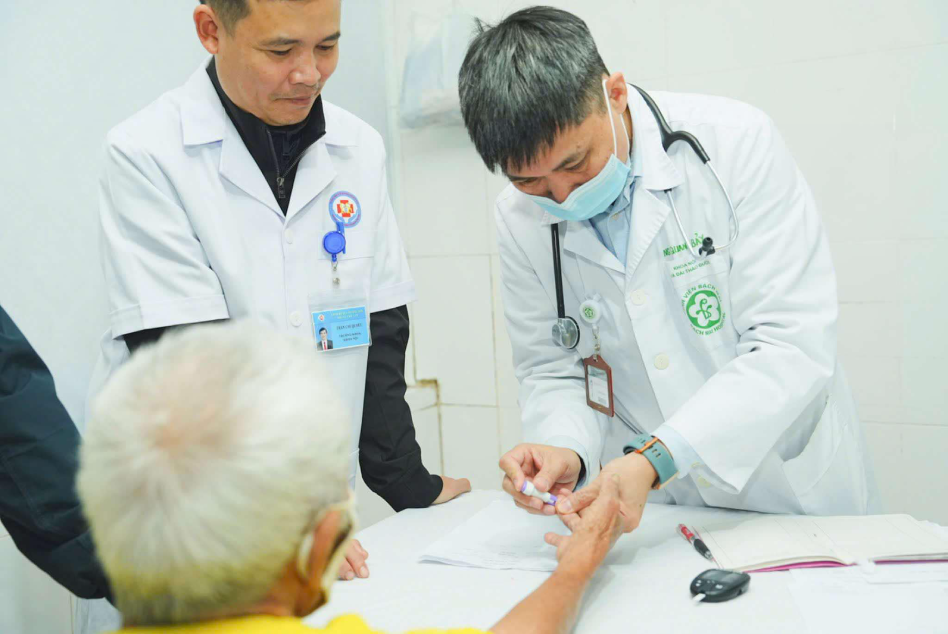
N.C.C, 42, from Gia Lam, Hanoi came to Bạch Mai Hospital for a health check as he had lost 3 kilograms within a month, was fatigued, and had blurred vision in one eye.
Clinical examinations revealed kidney and eye damage in C. His blood test showed a blood glucose level of 11.3 mmol/L. Further tests confirmed a Type 2 diabetes diagnosis, with complications affecting his kidneys and eyes, causing vision impairment.
H.T.K.A, 49, from Cau Giay in Hanoi also experienced frequent blurred vision and eye fatigue. At first, she thought that it was age-related presbyopia and took many eye supplements and began wearing glasses.
However, with her vision deteriorating, she visited the Eye Hospital in Hanoi. An eye exam showed retinal damage, suspected to be resulting from a metabolic disorder. Her blood sugar level was extremely high at 10.2 mmol/L, coupled with lipid metabolism issues.
A affirmed that she exhibited no symptoms of disease and maintained a weight of 49-50 kilograms, thus underestimating metabolic disorders.
According to the Vietnam Endocrinology and Diabetes Association, about 5 million people in Vietnam have diabetes, a disease considered epidemic as cases continue rising. Previously, the disease was seen only in older people, but now, it is also attacking younger people, linked with sedentary lifestyles and fast food consumption leading to obesity.
This disease causes numerous complications on the entire body, including eyes and kidneys. In many cases, patients have to have a limb amputation, or suffer from heart attacks and strokes.
Nguyen Quang Bay, Head of the Endocrinology - Diabetes Department at Bach Mai Hospital, noted that symptoms of diabetic retinopathy in early age are often unclear. Only when patients experience discomfort and blurred vision do they seek medical help.
Diabetic retinopathy is a complex complication, making diagnosis especially challenging and often overlooked.
Bay said patients need to manage all risk factors, strategize to achieve blood sugar, blood pressure, and lipid targets, in an aim at disease stabilization, risk reduction, and slow progression, ensuring long-term quality of life.
Globally, the prevalence of diabetic retinopathy in diabetic patients is 22.3 percent, equivalent to over 103 million people (2020). By 2045, the number of patients is predicted to increase to 55.6 percent-over 160 million people.
In many countries, diabetic retinopathy is the leading cause of blindness among working-age individuals. The annual treatment cost for diabetic retinopathy amounts to approximately $629 per patient.
Additionally, those over 45 should undergo a blood glucose test at least once every three years. Women with a history of gestational diabetes or polycystic ovarian syndrome should have more frequent blood sugar checks.
Phuong Thuy